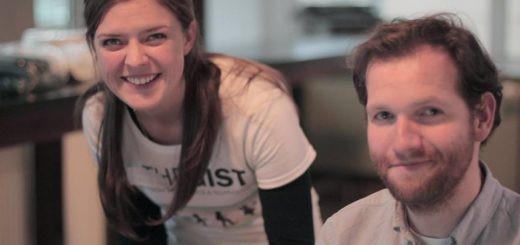The heritage smells project
Craig McInnes delves into the world of ‘heritage smells’ and discovers how chemistry could help safeguard museums’ artefacts.
Do you have a favourite sense? I’d reckon it’s probably your vision, possibly with hearing a close second. Whilst there’s no denying that these two are by far and away the most useful to our everyday lives, another sense is serving as inspiration to a collection of analytical chemists and a welcome tool to the modern curator’s ‘bag of tricks’. The ‘heritage smells’ project at the University of Strathclyde aims to sniff out volatile organic compounds (VOCs) which, in this context, serve as early warnings to some well and lesser-known troubles.
Imagine for a second, walking into an old library and perusing the shelves stocked with old leather bound books. You stop to pluck one from its home and as you crack it open, realising its fragility, you take a deep breath in, and there it is: a myriad of scents. The complex mixture of scents gives our library its familiar ‘old book’ smell, but to a well trained chemist, this is also a goldmine of information.
How is this smell useful?
It’s important to ask one question first before we go any further: why don’t new books smell the same as old ones? Simply put, they haven’t degraded yet. For many years, materials chemists have expended a great deal of effort trying to understand degradation processes at the molecular level, which eventually destroy old books and museum artefacts. Some processes are very well understood and the degradation of paper and plastics are amongst them. Knowing the details of these processes allows the heritage smells team to train their instruments to look for certain chemicals known to be degradation products. The team’s main area of research revolves around archived books, modern art exhibitions and ethnographic pieces.
Instrumentation is crucial in understanding which artefacts need a curator’s attention. The machinery used allows for a very early detection of degradation products and should allow the user to find certain VOCs at a level of one part per billion (that’s the equivalent of one sheet in a roll of toilet paper which stretches from London to New York). This early detection should allow conservators to notice degradation before it reaches the fairly advanced stages of brittle books and crumbling plastic. As with any problem, the quicker you deal with it, the less of a problem it becomes. Crucially, this new technology needs to be portable and non-destructive.
What are they looking for?
The question of which chemicals represent the tell-tale signs of degradation very much depends on what artefacts the chemist is looking at. For paper it can be simple carboxylic acids, formaldehyde, aromatic compounds such as furfural, toluene and even vanillin – a compound found in vanilla beans. When it comes to plastics such as archived films, tapes or sculptures, the specific VOCs depend on the type of polymer used to make the item. It’s not uncommon to find upwards of 80 VOCs given off during degradation, so picking the few important ones is a tricky task.
In some cases museums hold artefacts which have been exposed to pesticides and other chemicals harmful to health such as organophosphates or inorganic salts like arsenic trioxide. It could be detrimental to the health of staff and patrons were they exposed to these items, therefore it is essential that these pieces and the VOCs given off be identified quickly and an informed decision taken on how to deal with them. No museum wants to injure their museum visitors. However, what happens when curators can’t touch or even go near these items? The heritage smells team are working on an answer.
How can we get around this problem?
The heritage smells team led by Lorraine Gibson, are developing the means to ‘sniff out’ these VOCs using portable devices. Gibson is quick to point out that they are “not reinventing the wheel” but are fine tuning existing technology and ‘training’ the machines to ‘sniff out’ and identify specific VOCs of interest. The team hope to use techniques such as infrared spectroscopy (FTIR), near-IR, and Raman spectroscopy to identify unknown materials (a common occurrence when dealing with plastics). It is then possible to use some commercially available Tenax tubes (a chemical sorbent) to capture and deconvolute the VOCs before using mass spectrometry to identify them. Using this set up it would be possible to identify artefacts which need attention in a non-destructive fashion without needing to disturb the objects – which is always good when dealing with one-of-a-kind items.
To do this properly, the team has to go through the arduous process of discovering which chemicals are priorities, confirming a method to identify them, running standards of each VOC and then establishing a method of quantitatively identifying complex mixtures. Gibson likens the process to that of a handler training their sniffer dog to pick out and identify a particular scent and indeed the challenges are very similar. Any dog could smell the scent of an explosive or that of a drug, but being able to identify that scent over others and then inform the handler is where the skill and training comes in. In a similar fashion, having a well established method to identify specific VOCs reliably over other compounds, could be invaluable.
How far along is this technology?
The project is only in its first year and as such the technology is quite a few years away from commercialisation. Gibson says that her team have begun with technology similar to devices already used in the food and security industries and are in the process of developing from there. The hope is that a working prototype will be ready after three years and the team are already working with a number of libraries and museums to establish the technology.
Whilst the technology is aiming to be portable, anyone who has ever seen a mass-spectrometer will know that, in this case, the term is used loosely – don’t imagine a star trek styled tricorder. When it comes to stealing the job of a sniffer dog, the K-9 team can rest easy for now. However, should the project prove a success you could expect to see this technology expand into other areas where non-invasive methods are required. As the instruments available become more compact and truly more portable, expect to see the team sniffing out new opportunities while conservators breathe a sigh of relief. Let’s see if Gibson and her team can pick out the smell of success.










